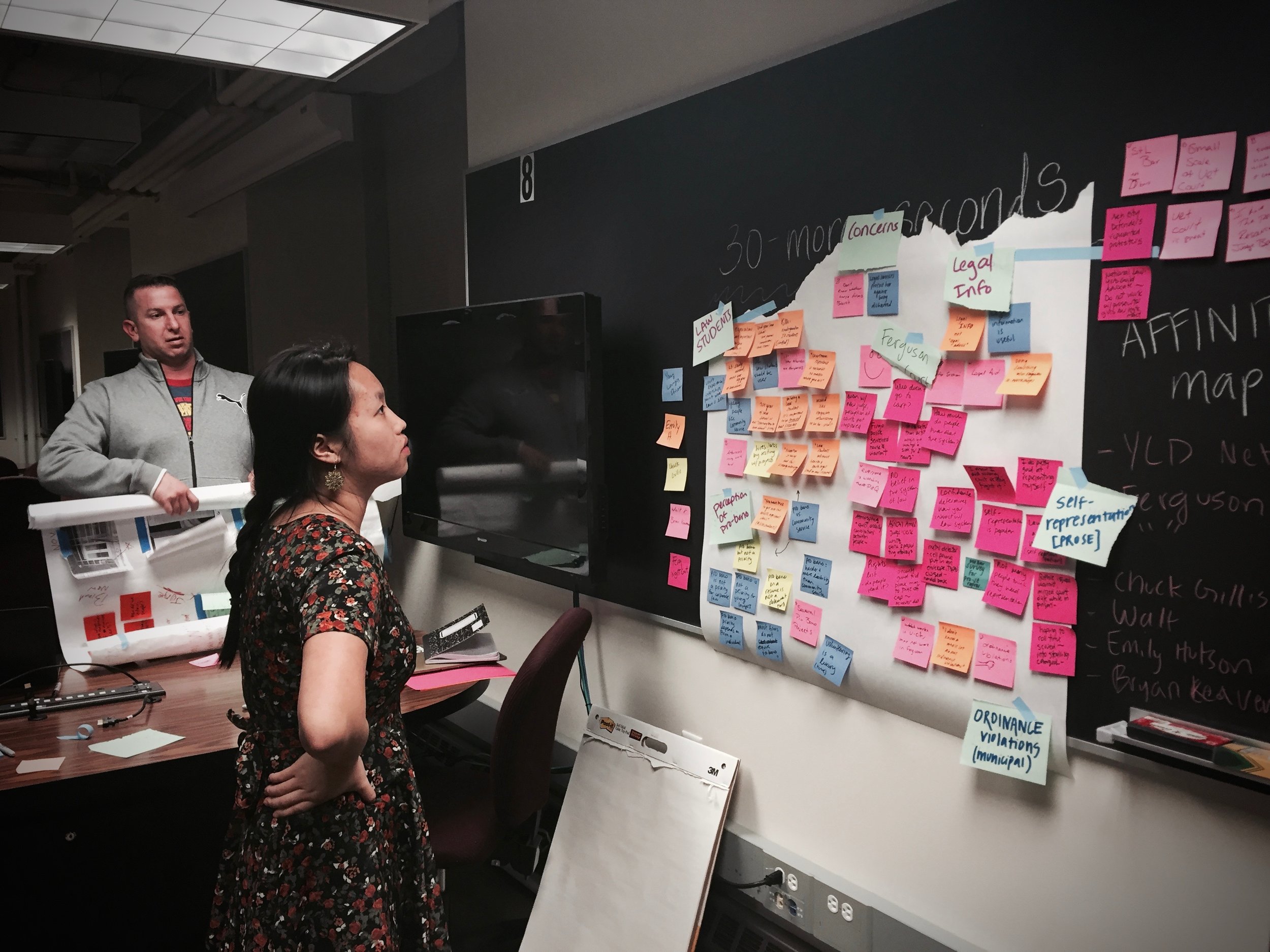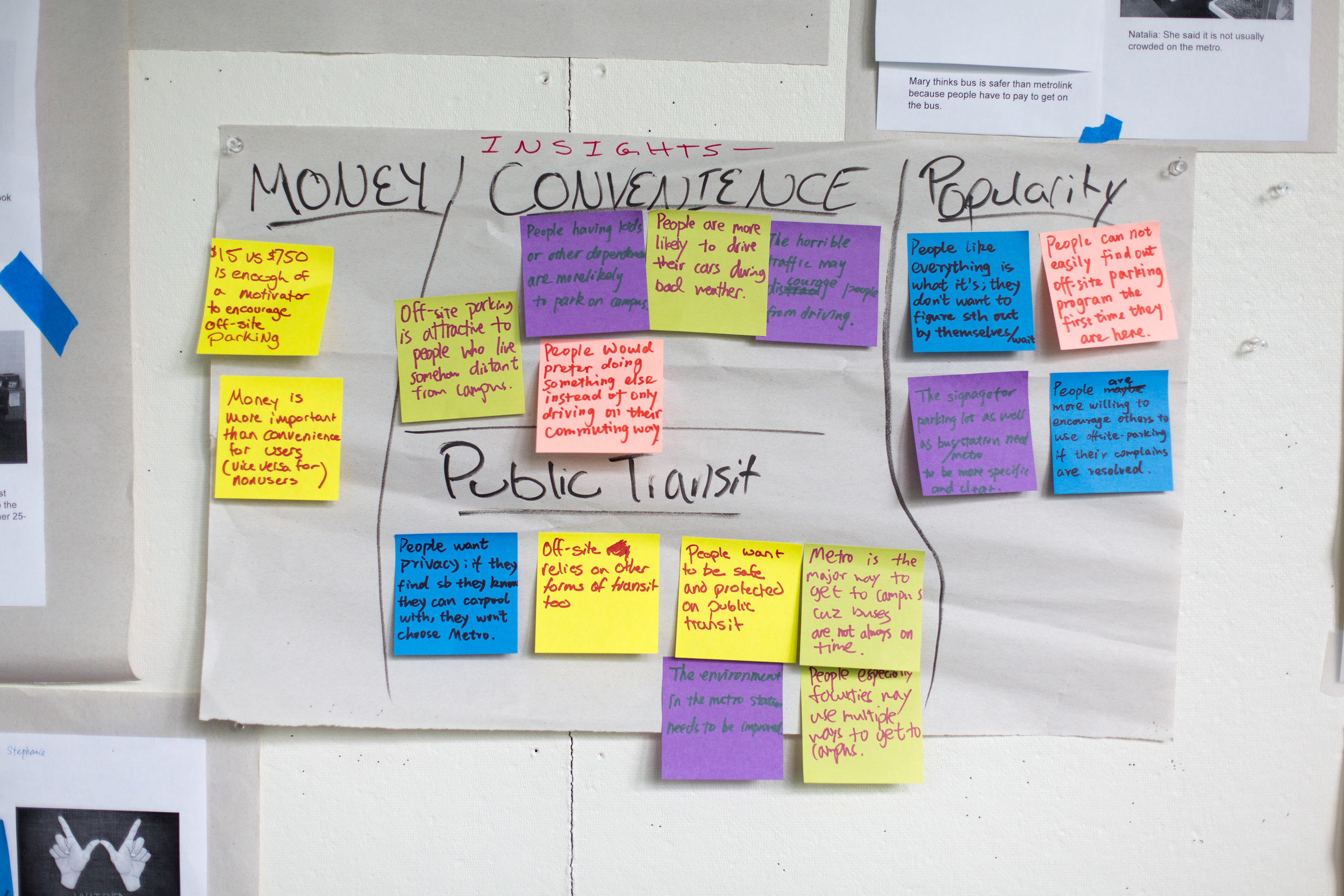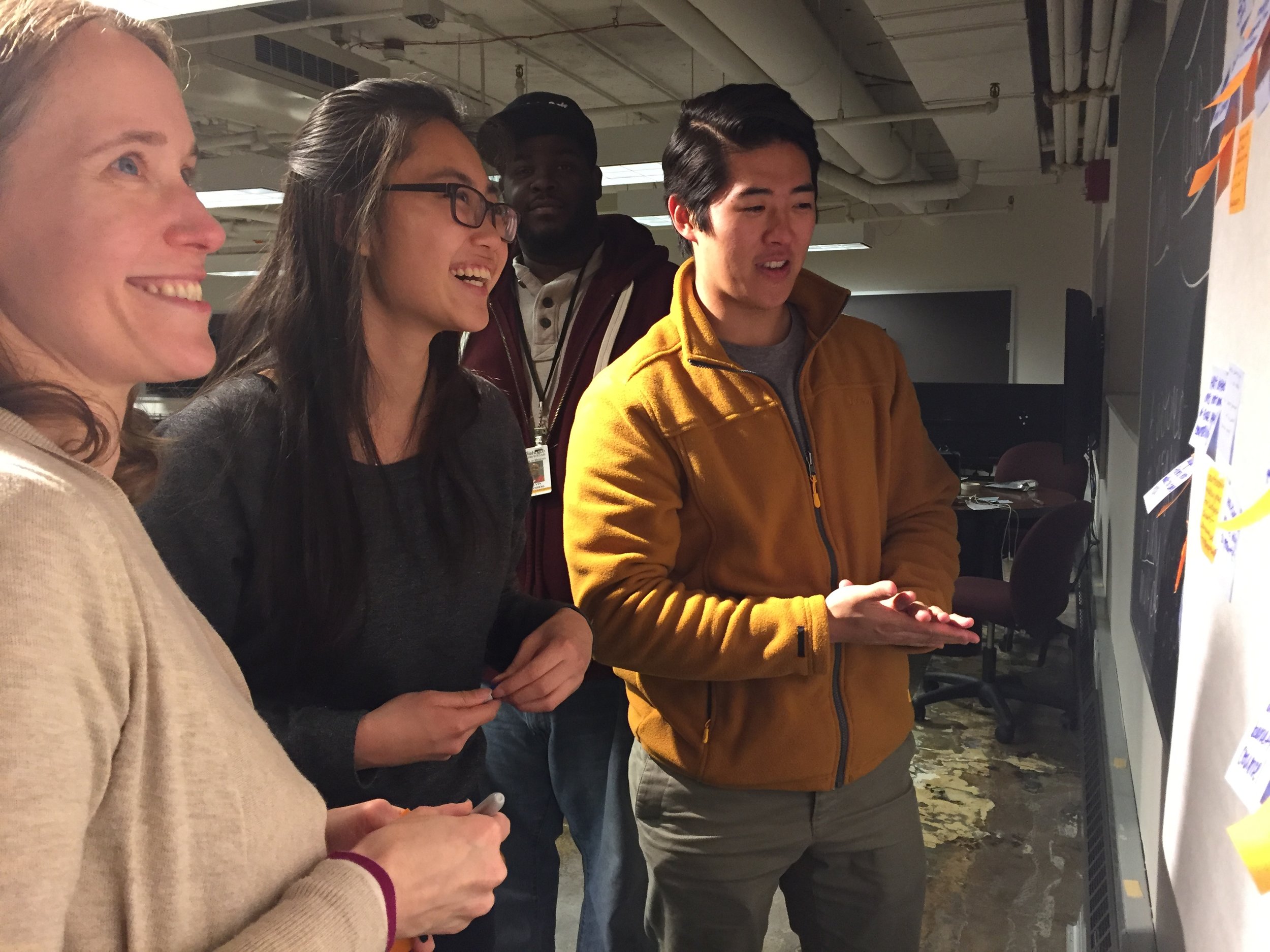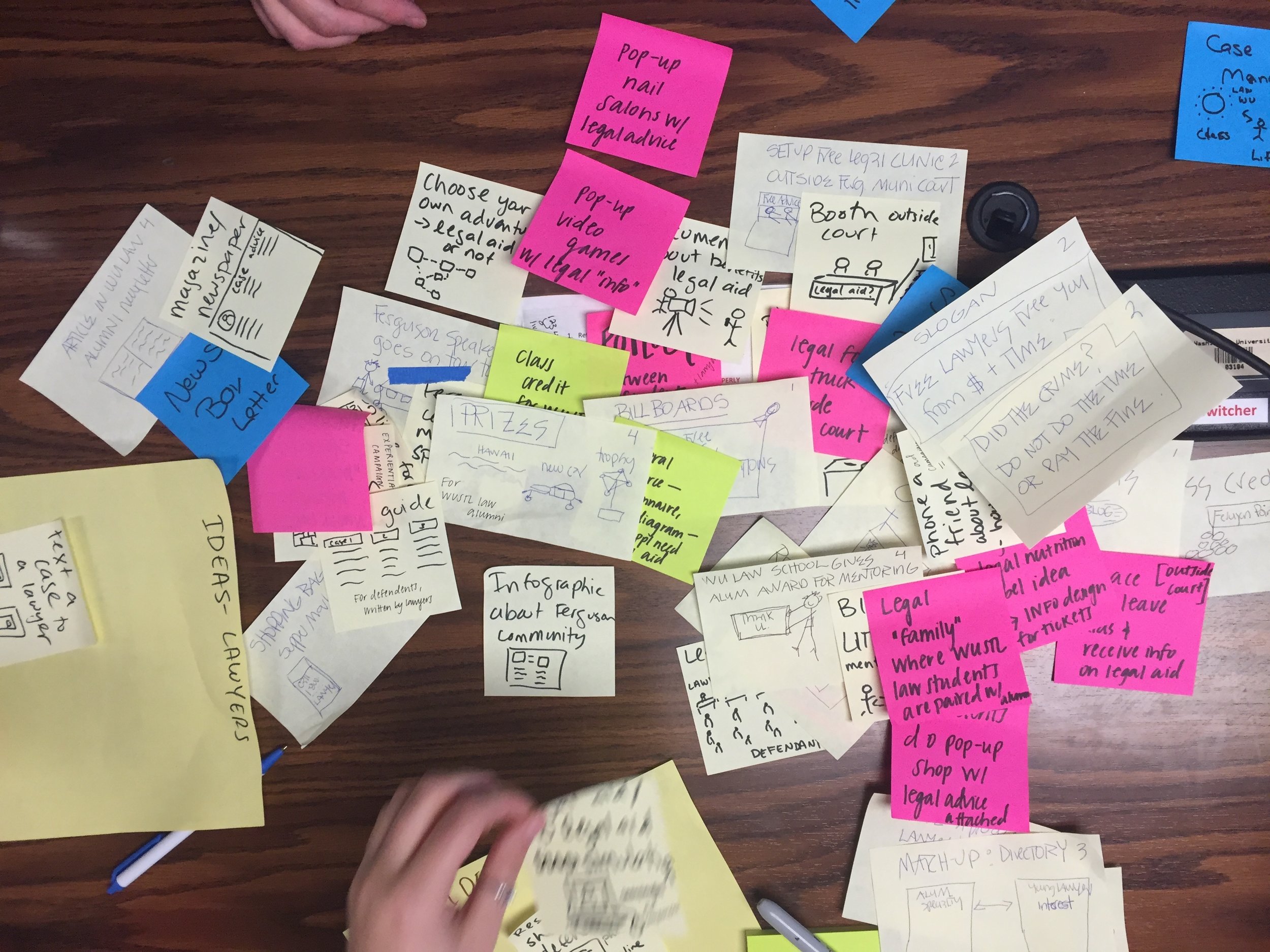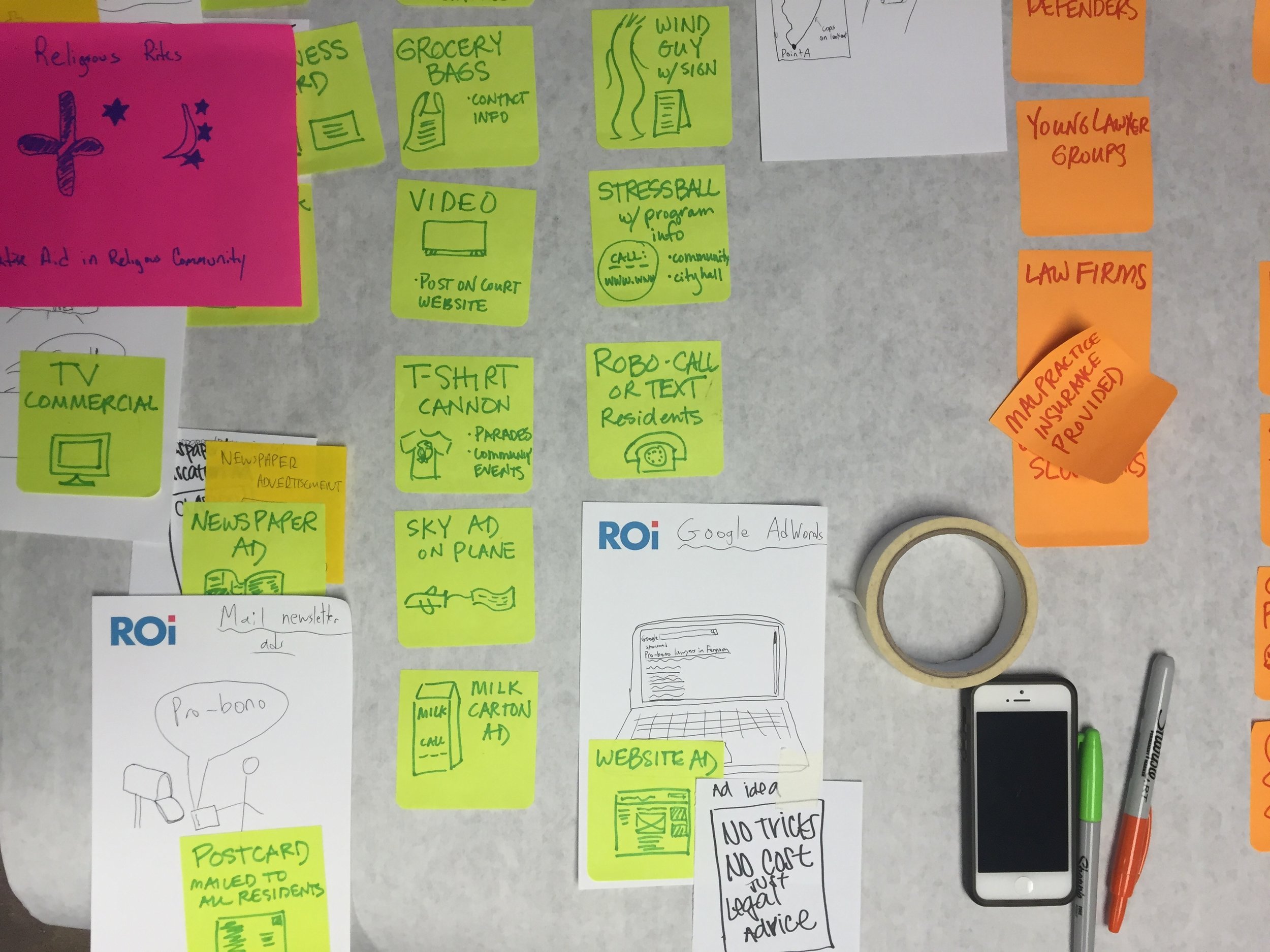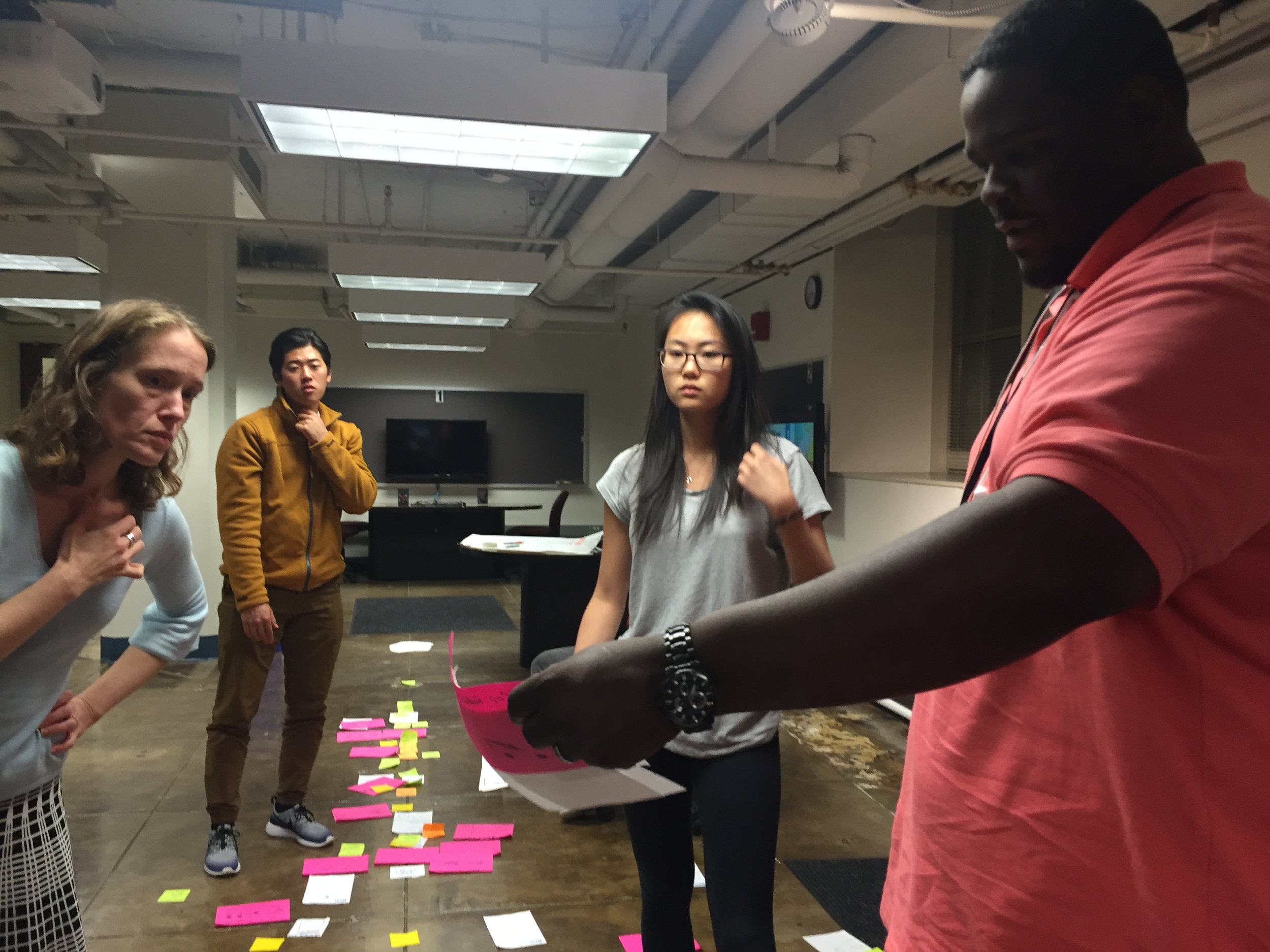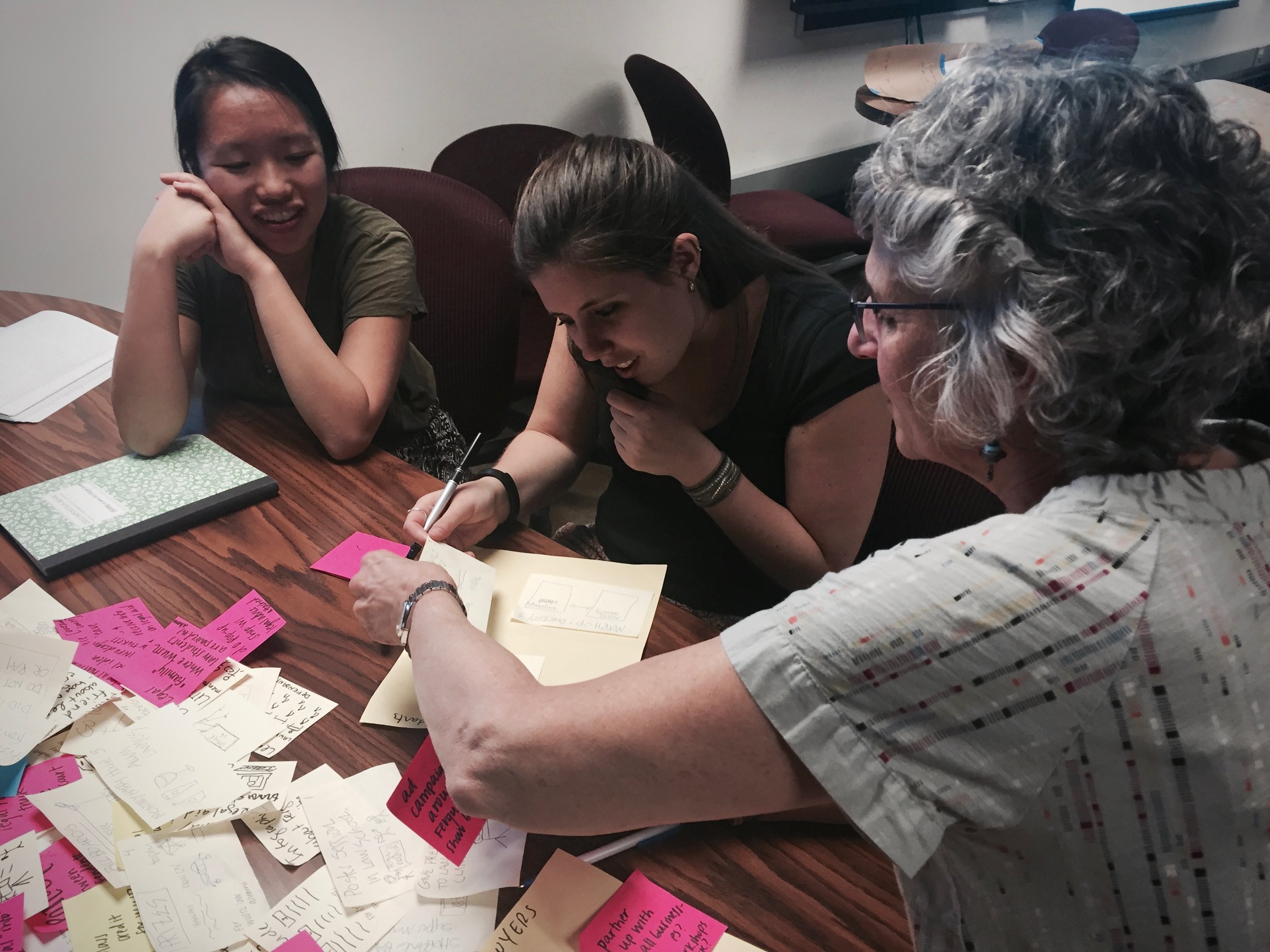I taught an introductory human-centered design class at Washington University in St. Louis.
2015 – 2017
Course Description
This course introduces design thinking: a process of identifying, creating, and implementing solutions. Students learn methods and work in teams to apply these methods to a locally relevant problem. Methodologies drawn from anthropology, business, design, and engineering enable students to discover users' needs; synthesize complex information; identify directives for design; generate ideas; and prototype, test, and communicate solutions. Additionally, students explore the role of design thinking in business, education, and social change through readings, case studies, lectures, guest speakers, discussion, and written exercises.
Students
No previous experience in design is required. Full-time students as well as full-time are university staff are eligible for this course, creating a eclectic mix of skills and experiences.
Outcome
Students develop the ability to discover unmet human needs and generate creative solutions. Some begin considering a career in design for the first time.
Links
Students learn to conduct field research and synthesize their unstructured findings.
“I now have a more robust toolkit to solve problems.”
“It gave me willingness to tackle a problem imperfectly. ”
Developing divergent ideas.
Selecting and refining ideas democratically.
“I realized it is essential to talk to as many people as possible because you may have the best coded product yet if it does not meet the need of the client then it will be obsolete.”
Students learn to refine their designs with usability testing.
Adrian, a business student, wrote in a reflection paper (which he gave me permission to quote):
"To be honest, I was skeptical of the prototyping process’s necessity. I felt as though most of the important strategic decisions could be foreseen and accounted for without actually testing. It turned out that our user testing sessions bridged more gaps of knowledge and developed more meaningful (and empirically driven) hypotheses about our future prototypes than arguably any of the previous sessions that our team had been a part of. Based on the feedback we received, we completely eliminated a central idea of one of our prototypes and combined all of our previous ideas to develop a new system."


